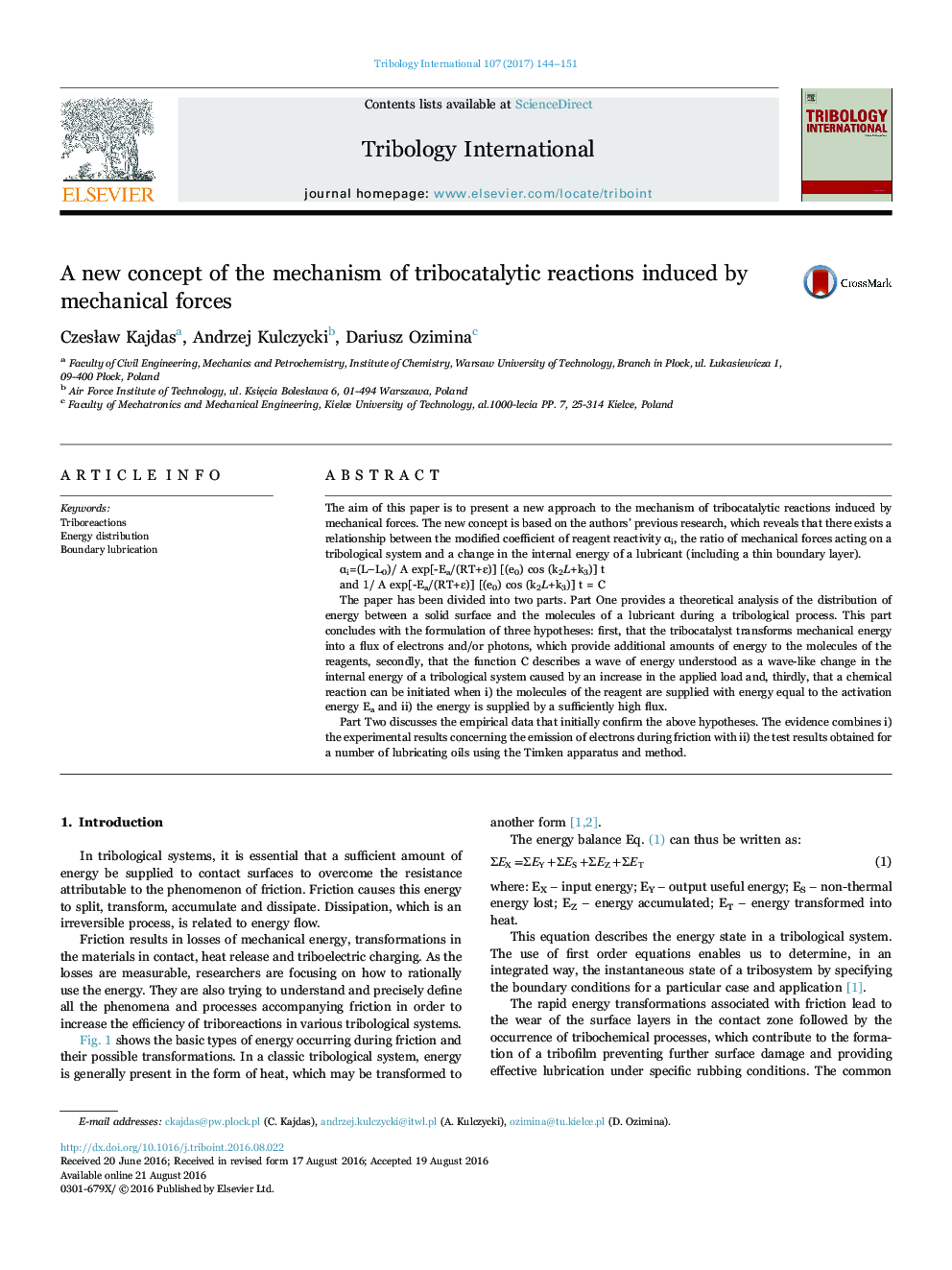| Article ID | Journal | Published Year | Pages | File Type |
|---|---|---|---|---|
| 4986221 | Tribology International | 2017 | 8 Pages |
â¢The paper presents a generalized model of energy transfer in tribological systems.â¢The mechanism of tribocatalytic reactions induced by mechanical forces is analyzed.â¢The load and the tribocatalytic reaction affect the system internal energy.â¢A new coefficient of reagent reactivity αi is proposed.â¢The tribocatalyst transforms mechanical energy into a flux of electrons.
The aim of this paper is to present a new approach to the mechanism of tribocatalytic reactions induced by mechanical forces. The new concept is based on the authors' previous research, which reveals that there exists a relationship between the modified coefficient of reagent reactivity αi, the ratio of mechanical forces acting on a tribological system and a change in the internal energy of a lubricant (including a thin boundary layer).αi=(L-L0)/ A exp[-Ea/(RT+ε)] [(e0) cos (k2L+k3)] tand 1/ A exp[-Ea/(RT+ε)] [(e0) cos (k2L+k3)] t = CThe paper has been divided into two parts. Part One provides a theoretical analysis of the distribution of energy between a solid surface and the molecules of a lubricant during a tribological process. This part concludes with the formulation of three hypotheses: first, that the tribocatalyst transforms mechanical energy into a flux of electrons and/or photons, which provide additional amounts of energy to the molecules of the reagents, secondly, that the function C describes a wave of energy understood as a wave-like change in the internal energy of a tribological system caused by an increase in the applied load and, thirdly, that a chemical reaction can be initiated when i) the molecules of the reagent are supplied with energy equal to the activation energy Ea and ii) the energy is supplied by a sufficiently high flux.Part Two discusses the empirical data that initially confirm the above hypotheses. The evidence combines i) the experimental results concerning the emission of electrons during friction with ii) the test results obtained for a number of lubricating oils using the Timken apparatus and method.
